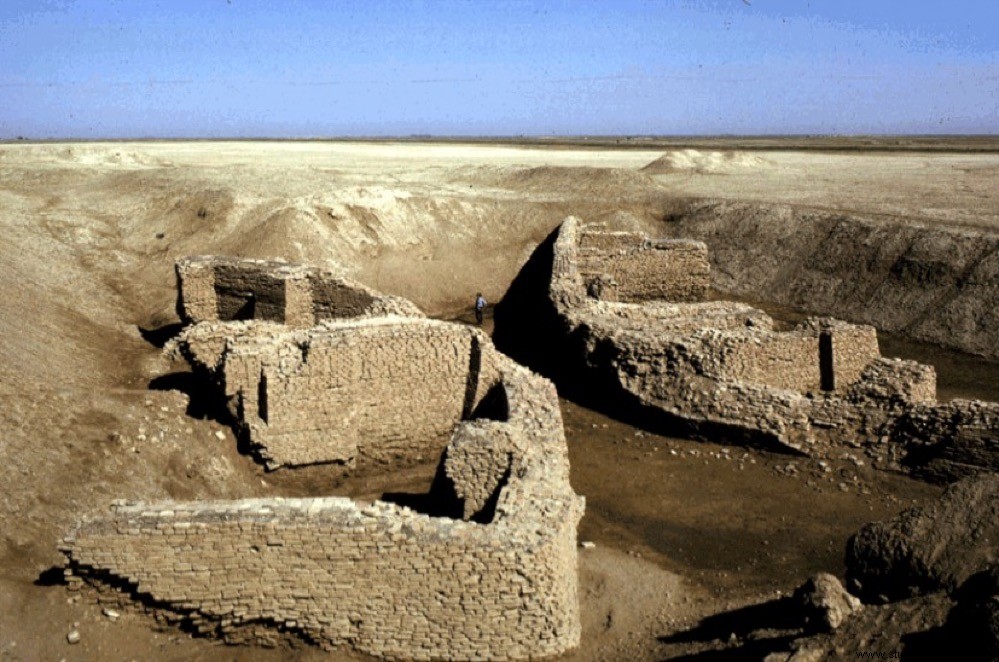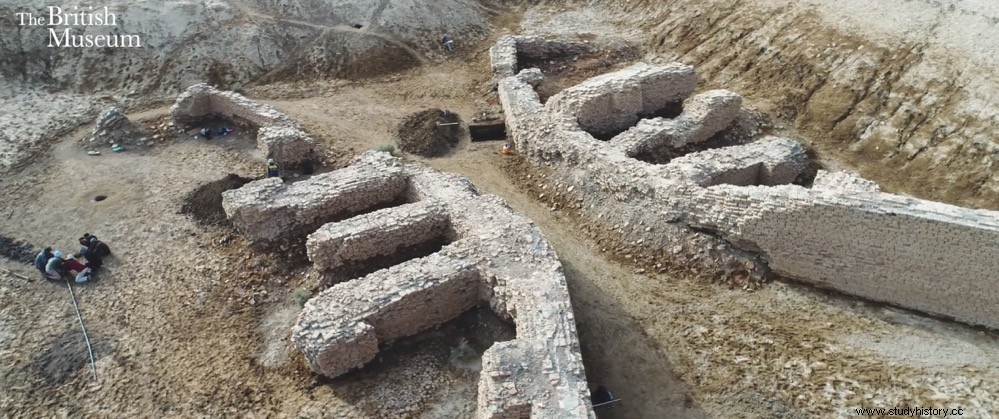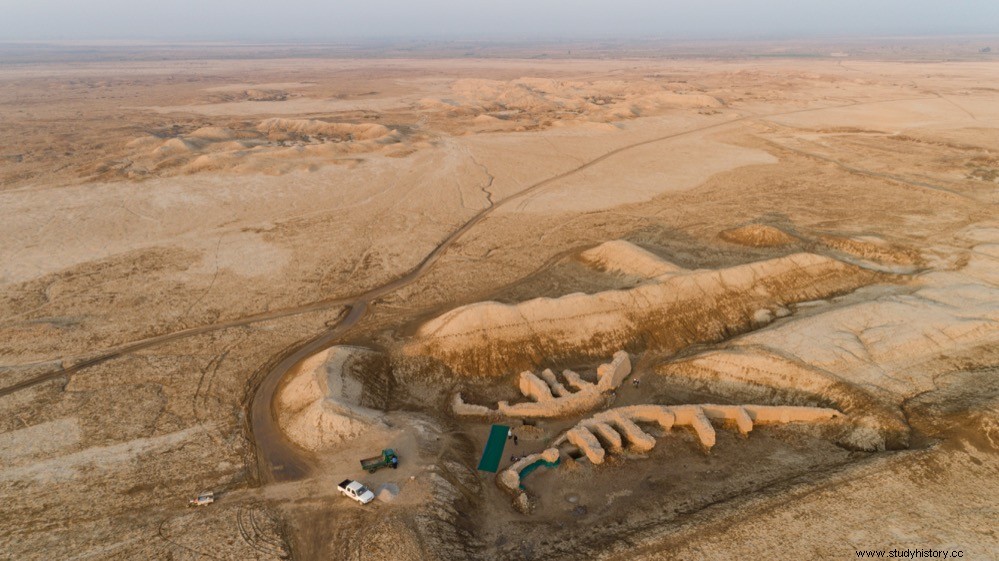At present-day Tel Telloh in the Iraqi province of Dhi Qar is the site of the ancient Sumerian city of Ngirsu (sometimes transliterated as Girsu). It is about 25 kilometers northwest of Lagash, one of the two main Sumerian city-states, to which it was connected by one of the branches of the Euphrates.
Ngirsu, whose foundation dates back to the 5th millennium BC, began its boom from the 25th century BC. with the first Sumerian dynasty, to such an extent that it became the capital of the kingdom and was its main religious center, a characteristic that it maintained even when political power later moved to Lagash.
It would be the first excavated Sumerian city, and therefore the one that would rediscover for the world that ancient civilization about which little or nothing was known until then.

It was Ernest de Sarzec, French vice-consul in Basra and an amateur archaeologist who, in view of the excavations that the British were carrying out in Ur, decided on his own to begin research in Ngirsu in 1877, after hearing the stories about the place. told some antiquities dealers. Sarzec worked at the site until his death in 1901, and is therefore considered the discoverer of the Sumerian civilization.
He was succeeded at the head of the French archaeological mission by Colonel Gaston Cros, who brought to light numerous objects and structures, such as the famous walled perimeter of the city, which was almost 10 meters thick, and found evidence that the cuneiform tablets were They were stored in a kind of administrative archive (more than 50,000 tablets have been recovered at the site). Cros worked at Ngirsu until 1909.

Problems in finding a suitable successor, and the subsequent outbreak of the First World War, interrupted excavations until 1929, the year in which Henri de Genouillac, a priest and archaeologist specializing in Assyriology, took over. In 1931, his health problems made him delegate the direction of the works to André Parrot (who years later would be director of the Louvre) until 1933.
It would be in 1929, with Genouillac already directing the excavation, when a strange structure appeared that at the time could not be described in any other way than enigmatic . Neither Genouillac nor anyone else had seen anything like it before. At first it was thought that they could be the remains of an ancient temple or a dam. And there were even those who proposed that it was a hydrological regulator. The solution was much simpler.
Recent studies using photographs from the 1930s and declassified satellite images from the 1960s, along with further investigations at the site, have shown that it is actually a bridge, built over an old riverbed. Not only that, it is the oldest bridge in the world discovered so far, built 4,000 years ago in the third millennium BC

Since the structure was brought to light in 1929 until April 2018, when restoration and conservation works began (in light of new research), the bridge remained exposed to erosion and practically forgotten.
Since then, a team made up of experts from the British Museum and Iraqi specialists from the State Board of Antiquities and Heritage have worked to ensure the survival of the bridge, thanks to its inclusion in the program to restore places affected by the destruction caused by Daesh (self-proclaimed Islamic State).
The program is part of the Iraq Heritage Management Emergency Training Plan, which is already training new archaeologists on the ground at the site, including the first eight female archaeologists in the country.
According to British Museum experts who have been involved in the earlier work, the bridge is an incredibly clever piece of ancient engineering on a grand scale. .
